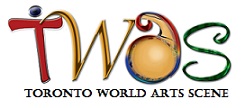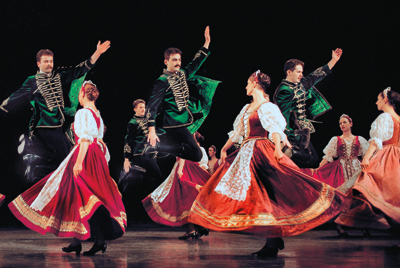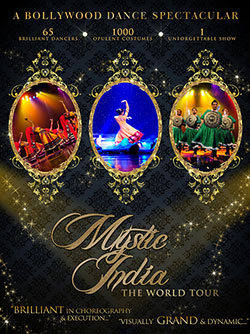COMING EVENTS – HUNGARIAN STATE FOLK ENSEMBLE & MYSTIC INDIA
Not your father’s Red Army Chorus: Examining the international audience appetite for staged nationalistic extravaganza and the World Music brand today
Andrew Timar, Oct. 28, 2013
I can recall a time late last century before world music became an accepted marketing term. Those days much “International music” or even “Ethnic Music” as it was sometimes catalogued and racked was relegated to inaccessible dusty, dark and sometimes dank corners of a few specialty Toronto record shops I trekked to. I’m thinking primarily of the once iconic retailers Sam the Record Man (1961-2007) and A&A Records (selling records from 1950s-1993) on Yonge St., now both long gone.
The thrill of the hunt was certainly as much a motivation for aficionados like me as was listening to the rare, difficult to find and often expensive LPs and later cassettes of music from far-off lands. Once they were bagged, unwrapped at home and spun on the turntable, however, they served as magic portals unto musical worlds outside of the ordinary which defined 20th late century North American commercial radio, TV, clubs and concert halls. Through such extra-normative audio experiences I first envisioned the huge grand vista of human musical expression which seemed in comparison only hinted at, glimpsed as through a keyhole, in performances on commercial media.
In live performance it was even harder to find representatives of the vague meta-collection of musical categories which since the late ‘80s is generally called world music. In big-ticket concerts it was often represented by large state-sponsored ensembles such as the Red Army Chorus. Such troupes regularly toured the world’s grand concert halls promoting their national cultures and political ideologies, spreading some much needed transitional goodwill along the way. Then in 1994 came the Riverdance phenomenon which revolutionised the by then stodgy touring state troupe shows with its infectious brand of Irish-inflected Celtic music spectacularly staged with in-your-face rock production values. The fabulously successfully Riverdance set a new standard for big-ticket big stage shows. It’s booked until the end of 2014.
Two such troupes visit GTA theatres in November of 2013. How do they reflect their big-stage world music pedigree?
November 25 the Hungarian State Folk Ensemble performs their show “Hungarian Rhapsody” at Roy Thomson Hall. For over 60 years the Budapest-based troupe has been an ambassador for both Hungarian art and folk music and dance cultures, touring the world’s large venues. A look at the evening’s programme reveals a concert with satisfying depth, balancing clichéd hyperbole with curated stagings of “folk” culture rooted in a century of careful scholarly ethnography. The show ranges from an exploration of the medieval roots of Hungarian rural culture found in remote geographic regions, for example “Dances from Gyimes, Eastern Transylvania,” to a musical “Remembrance of Liszt’s Rhapsodies,” celebrating the Hungarian-born Franz Liszt’s 19 Hungarian Rhapsodies. Based on folk and gypsy (both terms used in the written programme but both contested today) melodies and performance styles these Liszt compositions, in both piano and orchestral arrangements, helped popularise “Hungarian music” throughout the world. They also set the bar for many subsequent appropriations and commercial repurposings of music around the world which was “collected” in rural regions, later arranged for standardised Western concert instruments or SATB choirs by conservatory-trained musicians and consumed in salons, concert halls and on commercial recordings, most often by urban elites.
November 30 at 2pm and 8pm Mystic India, a “fusion of jazz, hip-hop, contemporary dance, kathak, bharatanatyam and Indian folk dances” animates the Flato Markham Theatre in Markham. The multi-ethnic cast of dancers and musicians in this opulent production aim to present a sweeping history of India on stage, including a glimpse of fast-paced Mumbai and Bollywood pop culture. Trading on images of mass-appeal costumed Bollywood-style film glamour, and cloaked in Indian nationalism, as well as in Western clichés of the “mystic East” and the “exotic,” this production appears less ethnographic tour and more like a Vegas stage show in feel.
Amit Shah the show’s director, choreographer and producer claims, “If you’ve ever wanted to visit India, this show is your direct flight there.” It seems the public’s appetite for the nationalistic big stage extravaganza is far from dead.



